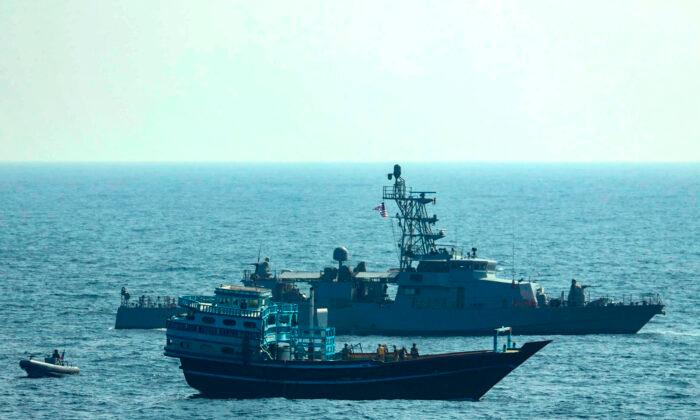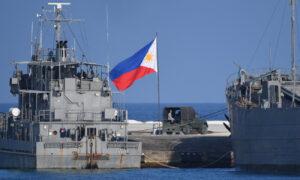The Philippine Navy on Sept. 11 commissioned two Cyclone-class patrol ships that were recently donated by the United States to enhance the Asian country’s capacity in the face of China’s ongoing “illegal activities” in the South China Sea.
Philippine Navy Chief Vice Admiral Toribio Adaci said the vessels, BRP Valentin Diaz and BRP Ladislao Diwa, will be used for coastal patrols, humanitarian support, and disaster relief operations.
The vessels, formerly known as USS Monsoon and USS Chinook, were initially stationed in Bahrain. The U.S. Navy decommissioned the ships on March 28 and transferred them to the Philippines under the Excess Defense Article program.
The two vessels will be integrated into the Philippine Navy as Alvarez-class patrol ships, which Mr. Adaci said are “essential in maintaining a safe and secure maritime environment” surrounding the country.
Tense Encounter Between Philippine, Chinese Ships
Recently, eight Chinese ships allegedly tried to block two Philippine Coast Guard (PCG) ships—BRP Cabra and BRP Sindangan—in Ayungin Shoal (also known as the Second Thomas Shoal).PCG spokesman Commodore Jay Tarriela said the Chinese ships’ actions jeopardized the safety of crew members aboard the PCG vessels and resupply boats. The resupply mission was successful despite the incident, he added.
“The PCG calls upon the [Chinese Coast Guard] and [Chinese Maritime Militia] to immediately cease any illegal activities within the maritime zones of the Philippines,” Mr. Tarriela said in a statement.

Philippine President Ferdinand Marcos Jr. expressed concern about China’s “illegal, unreported, and unregulated fishing,” as well as “the militarization of reclaimed features in the South China Sea.”
“We must oppose the dangerous use of coast guard and maritime militia vessels in the South China Sea,” he was quoted as saying by the PCG on Sept. 9.
Beijing claims much of the South China Sea as its own territory. In 2016, the Hague Tribunal sided with the Philippines in territorial disputes over the South China Sea, but China refused to recognize the ruling.
China’s New ‘10-Dash Line’ Map
Last month, the CCP published its “standard” national map showcasing its extensive claims in the South China Sea. The map now features a “10-dash line” instead of the previous nine dashes used to stake claims on the disputed waters, with an additional dash to the east of self-ruled democratic Taiwan.It also includes the Indian state of Arunachal Pradesh and the Aksai Chin in the Himalayan border, which China controls but India also claims, as well as the Russian territory of Bolshoy Ussuriysky Island.
The Philippines stated that the new map is an attempt by China to legitimize its purported sovereignty and jurisdiction over Philippine features and maritime zones in the South China Sea. It urged China to abide by the international law.
“The Philippines, therefore, calls on China to act responsibly and abide by its obligations under UNCLOS and the final and binding 2016 Arbitral Award,” the Philippine Foreign Affairs Department stated.







